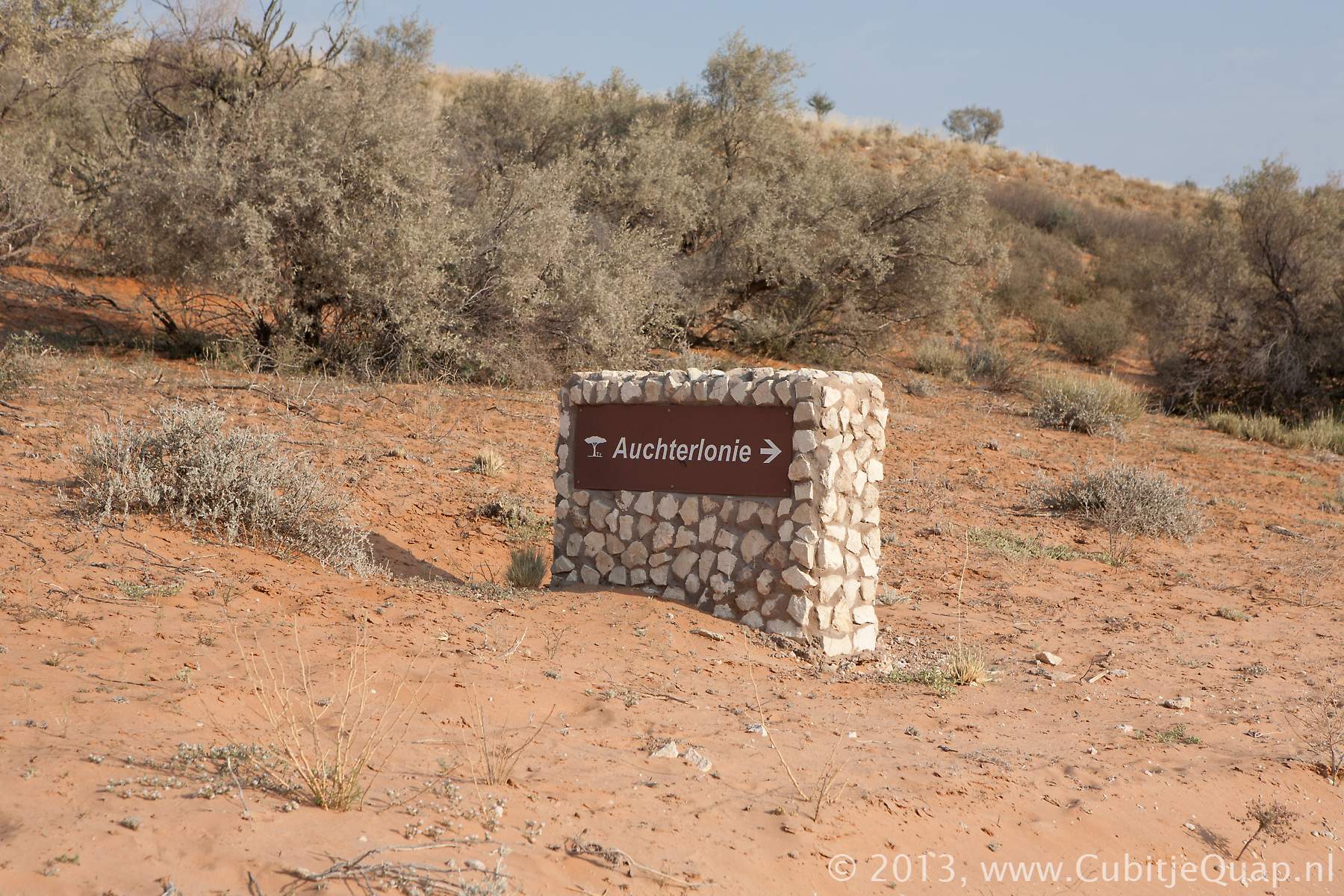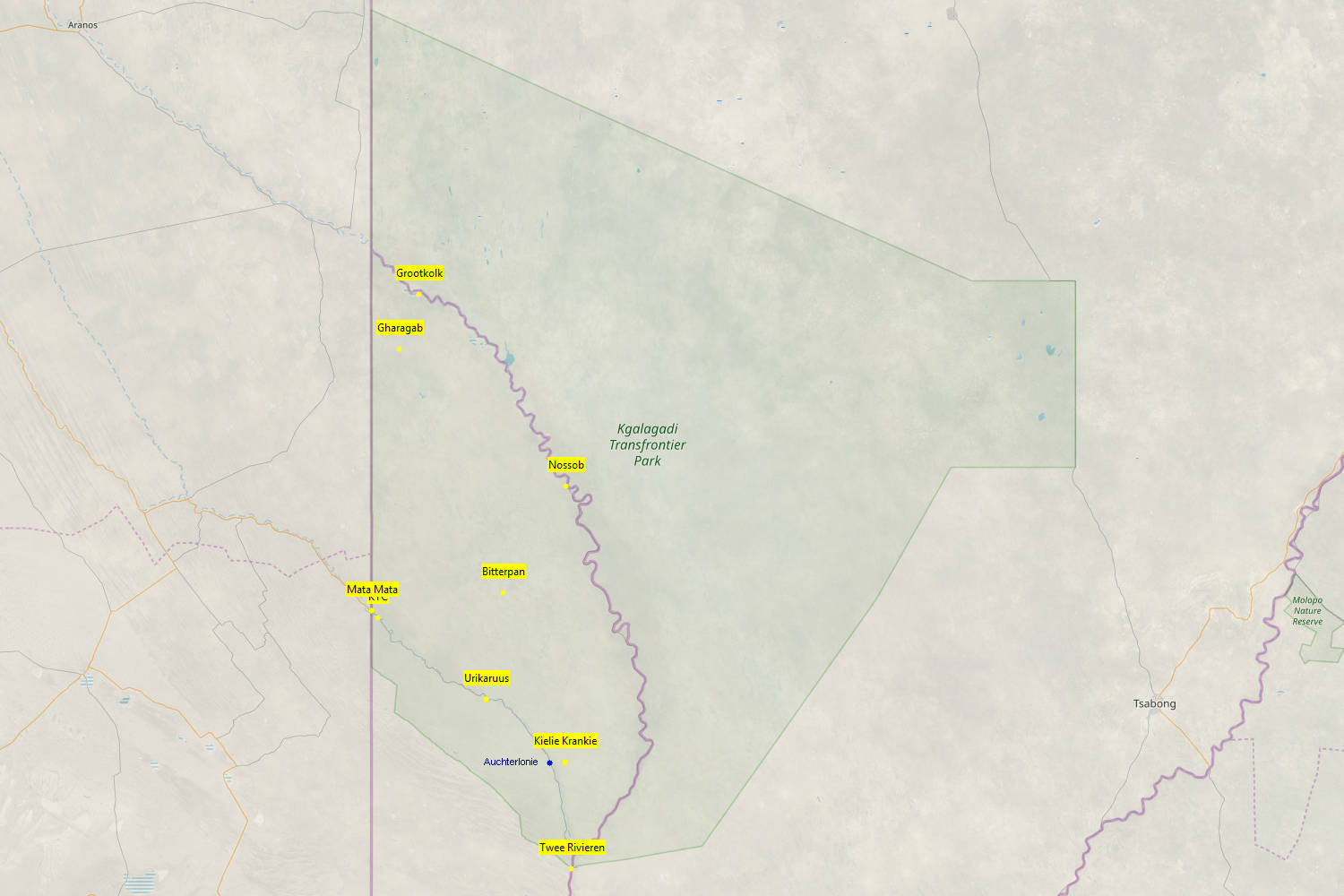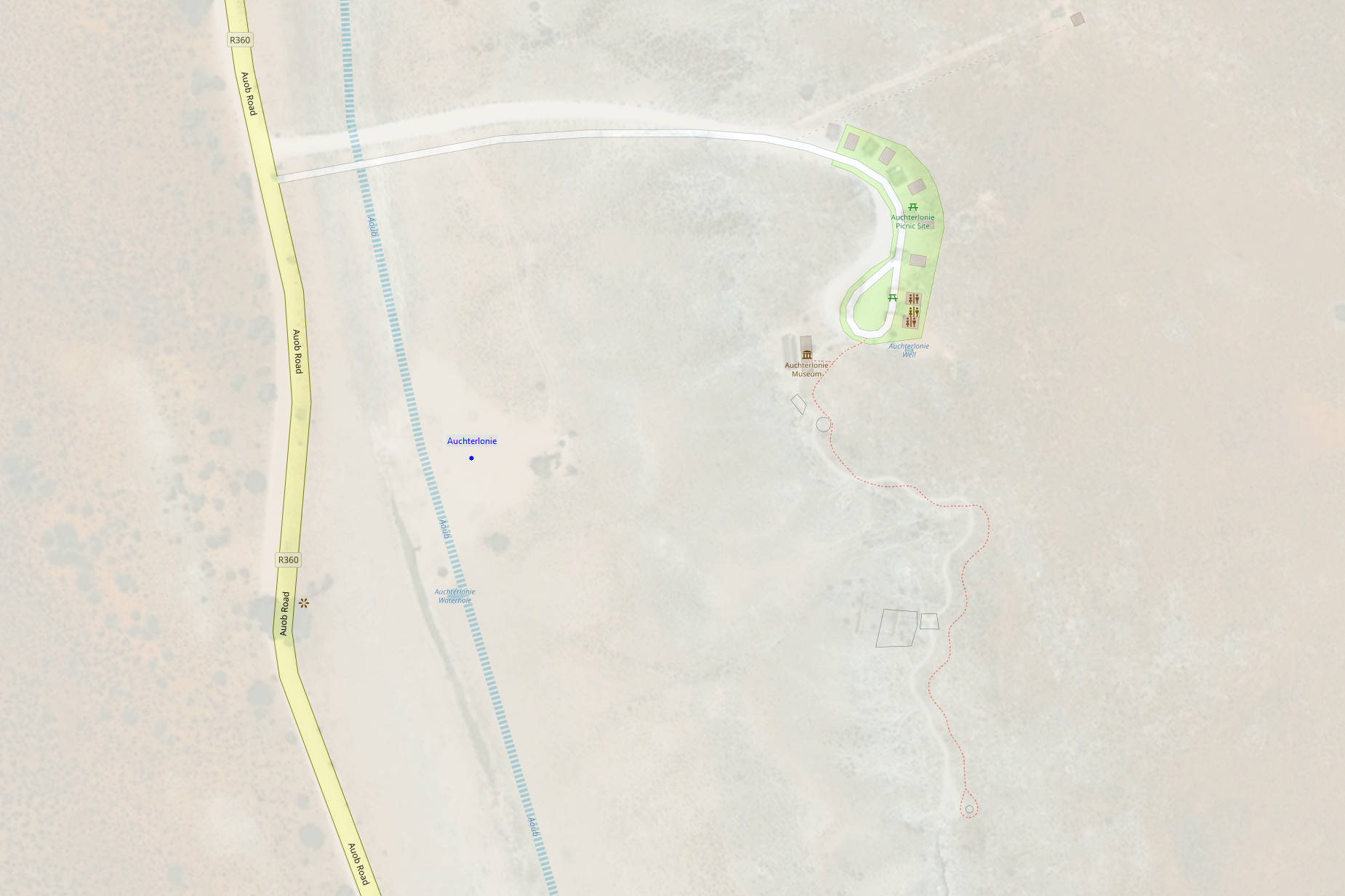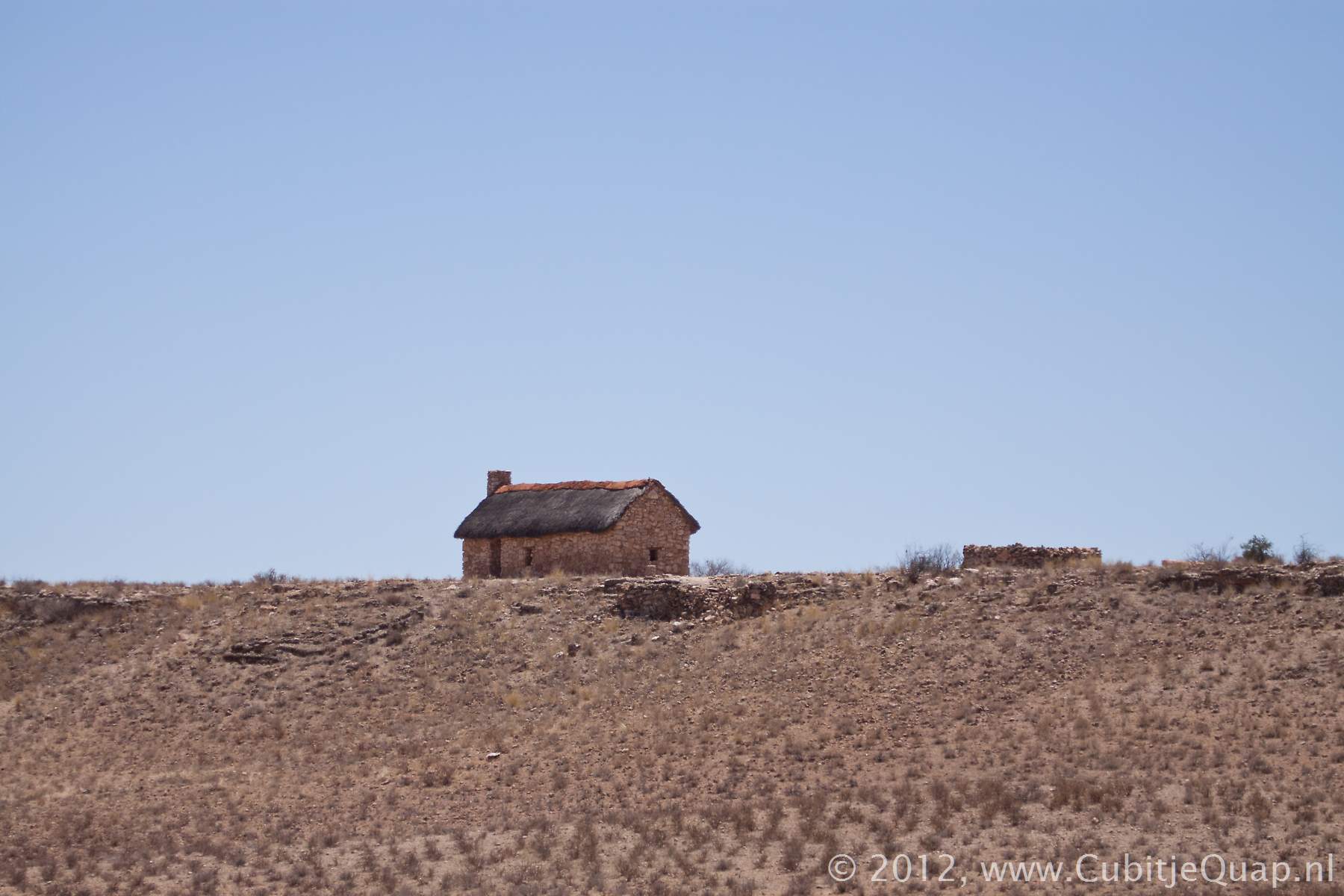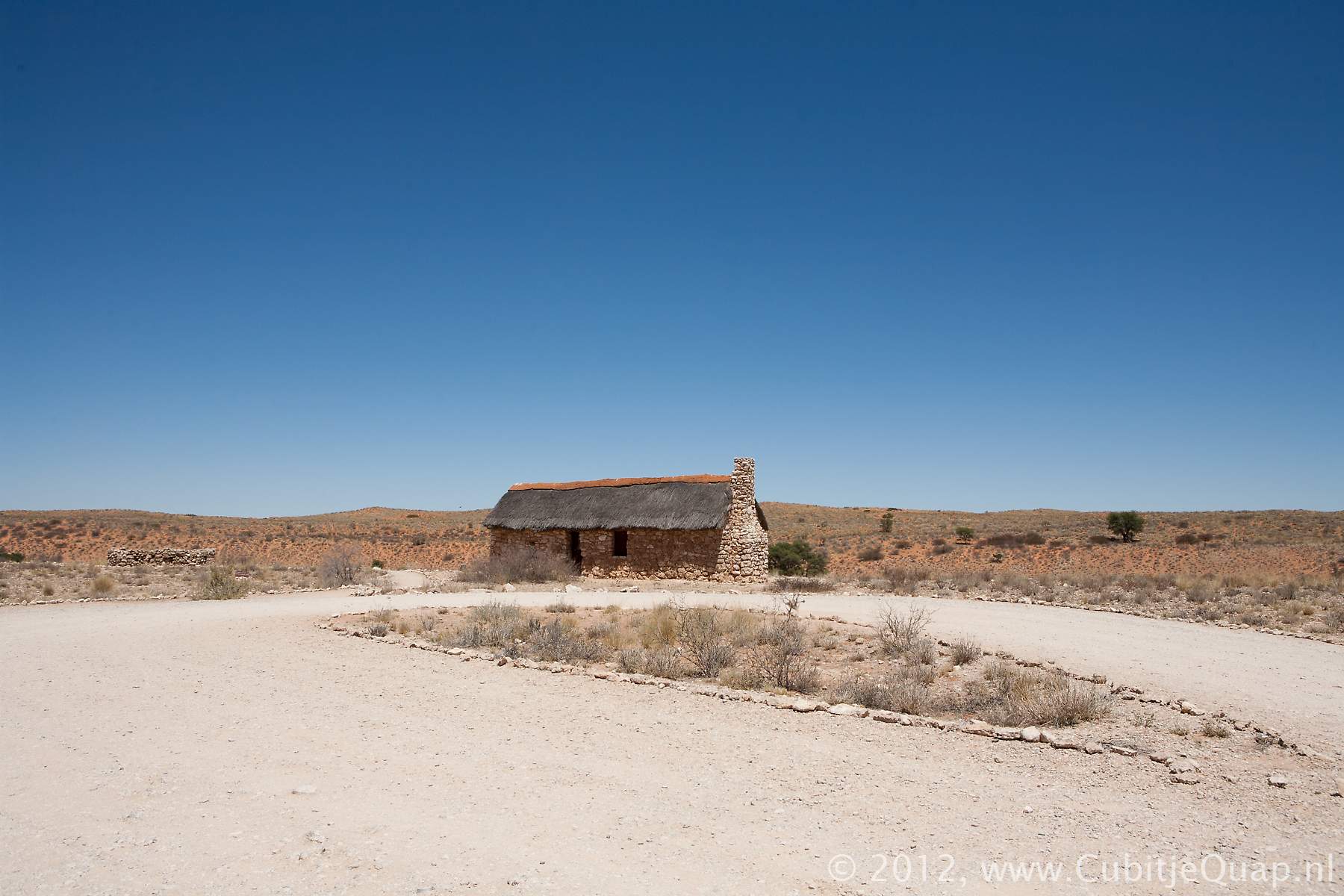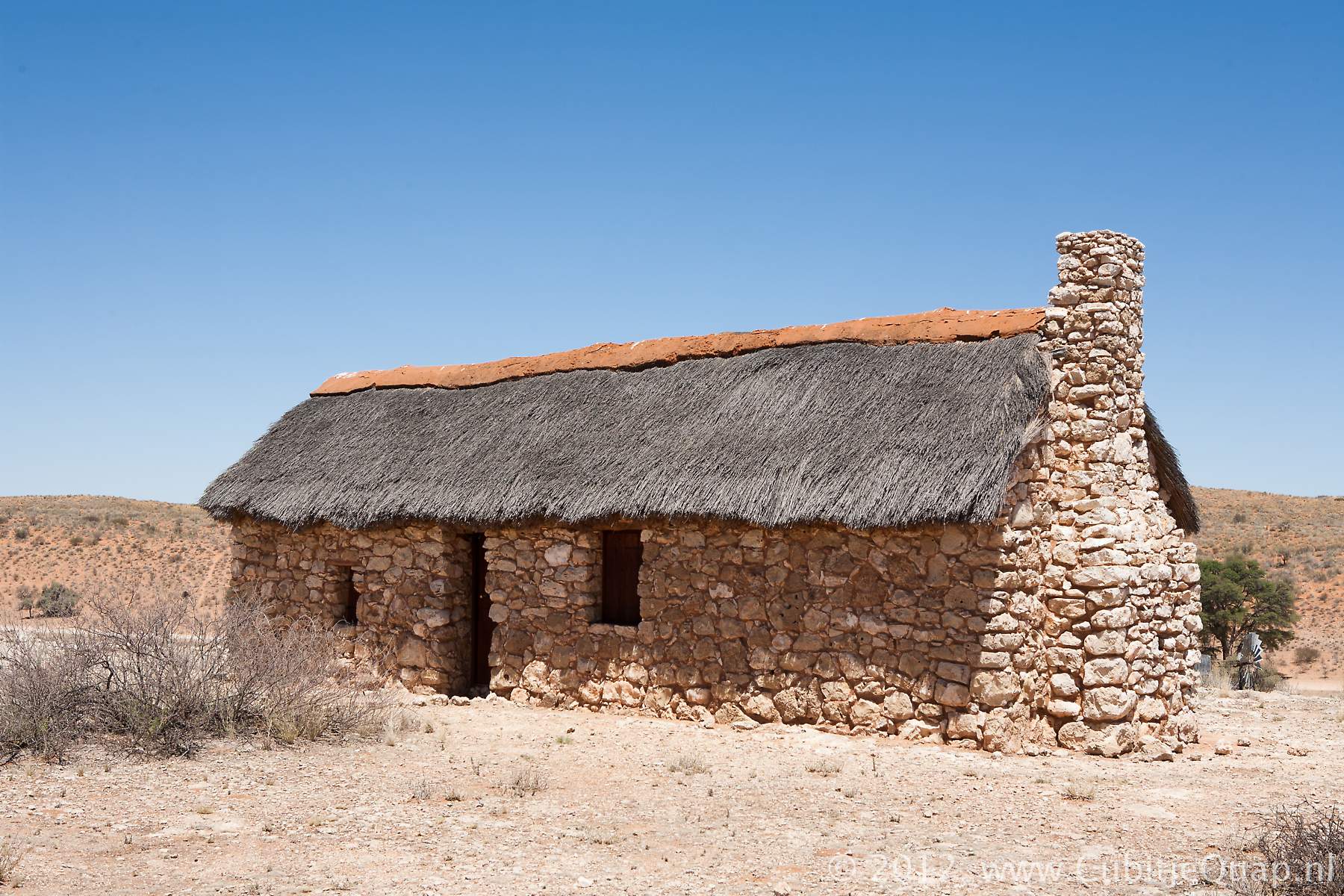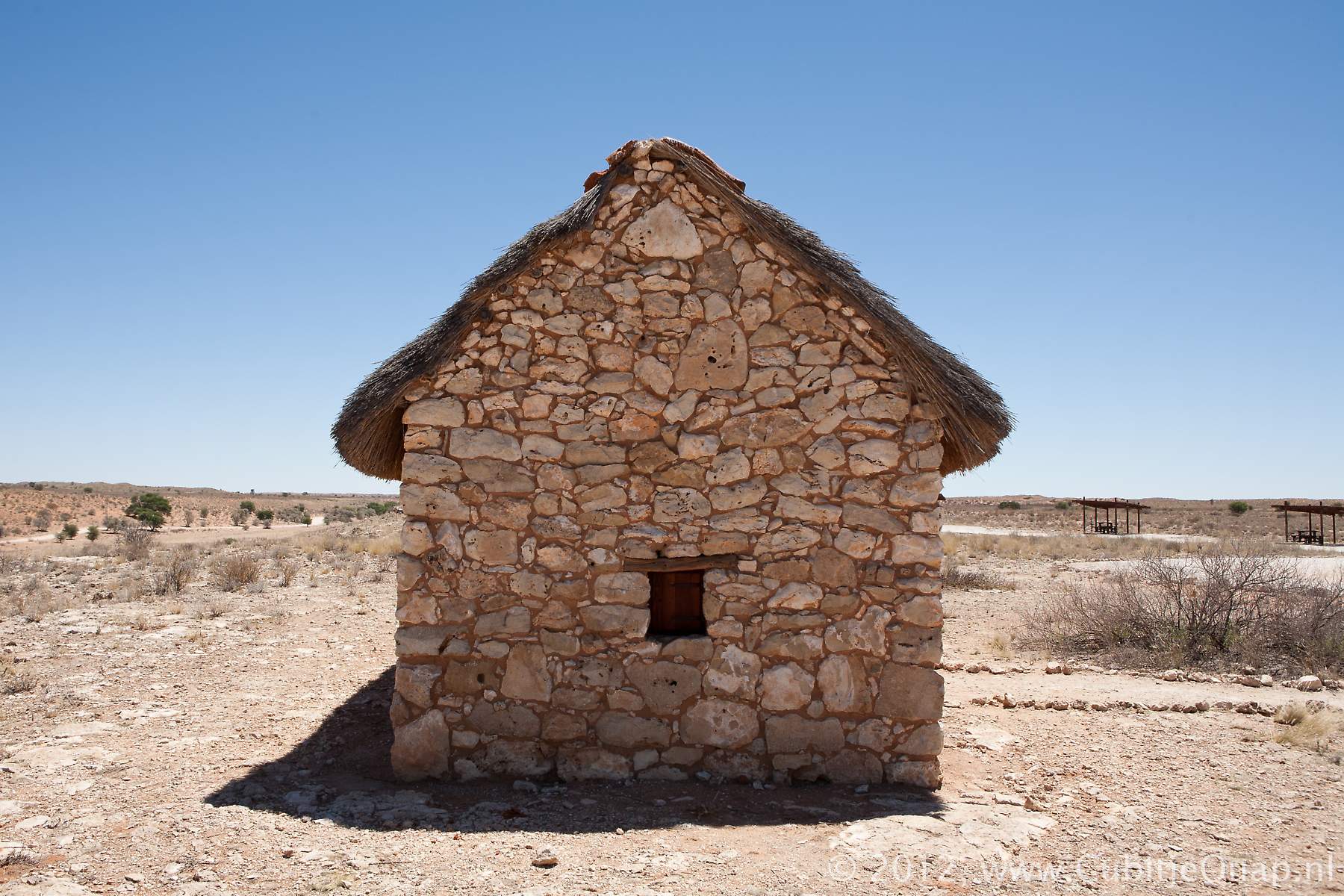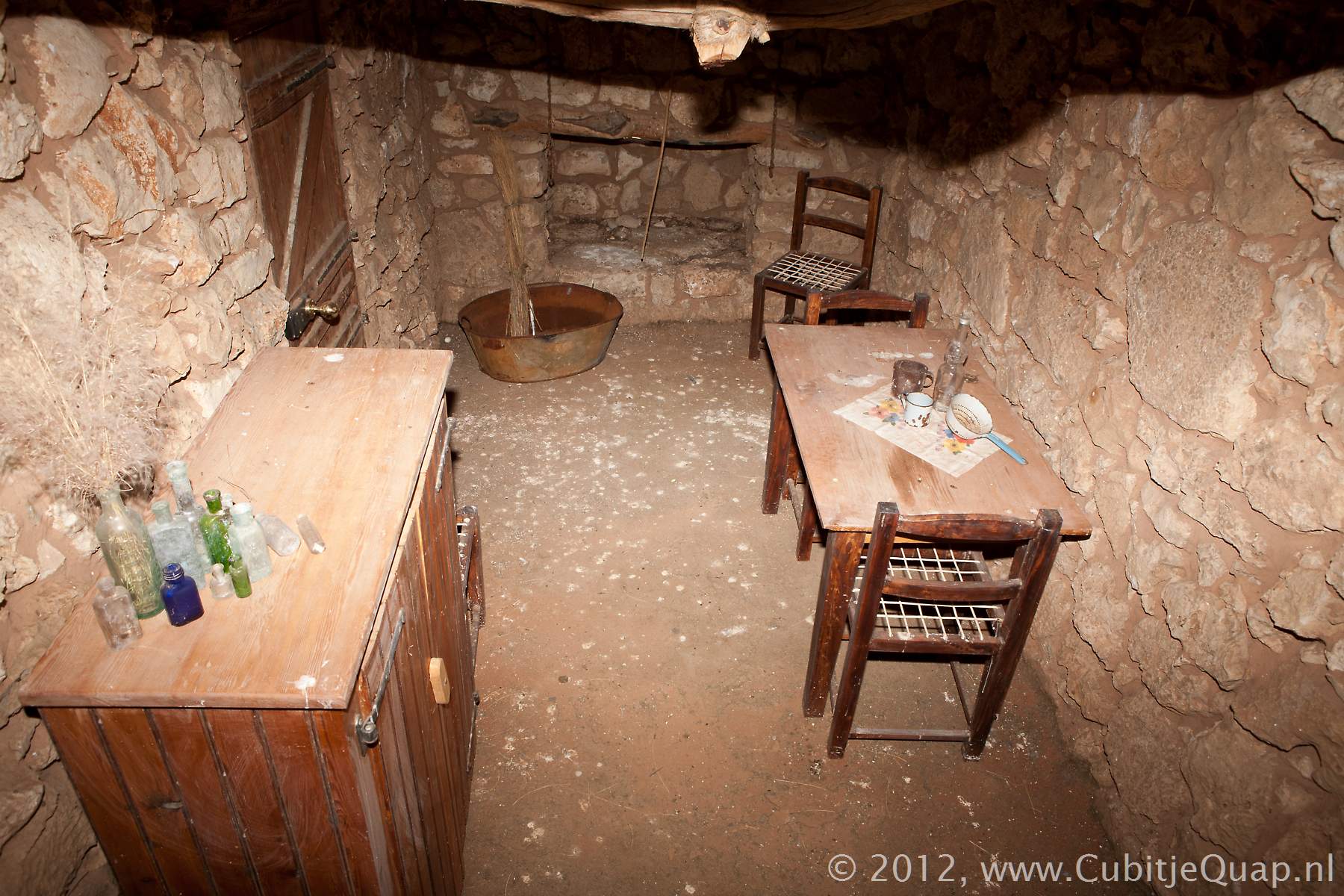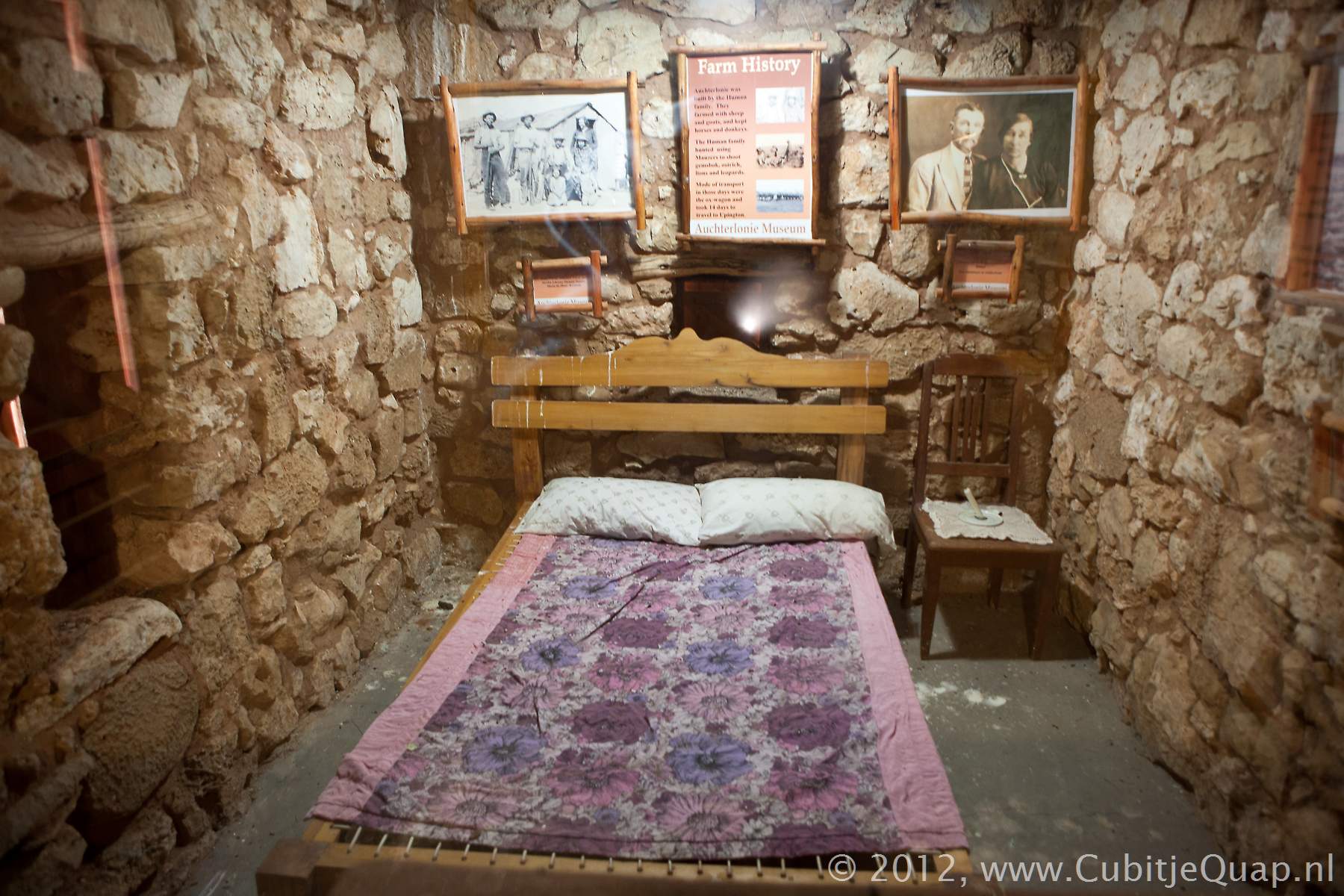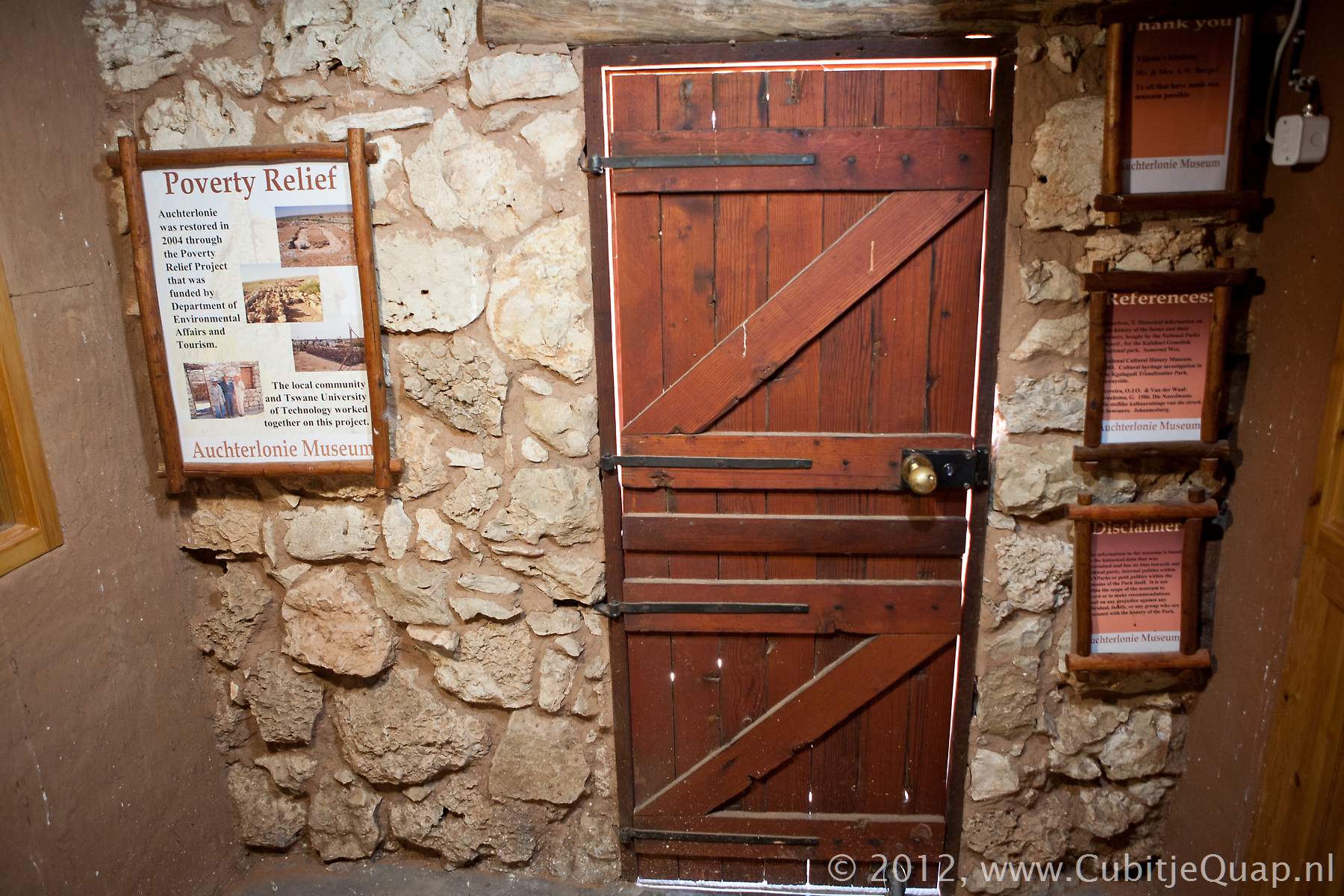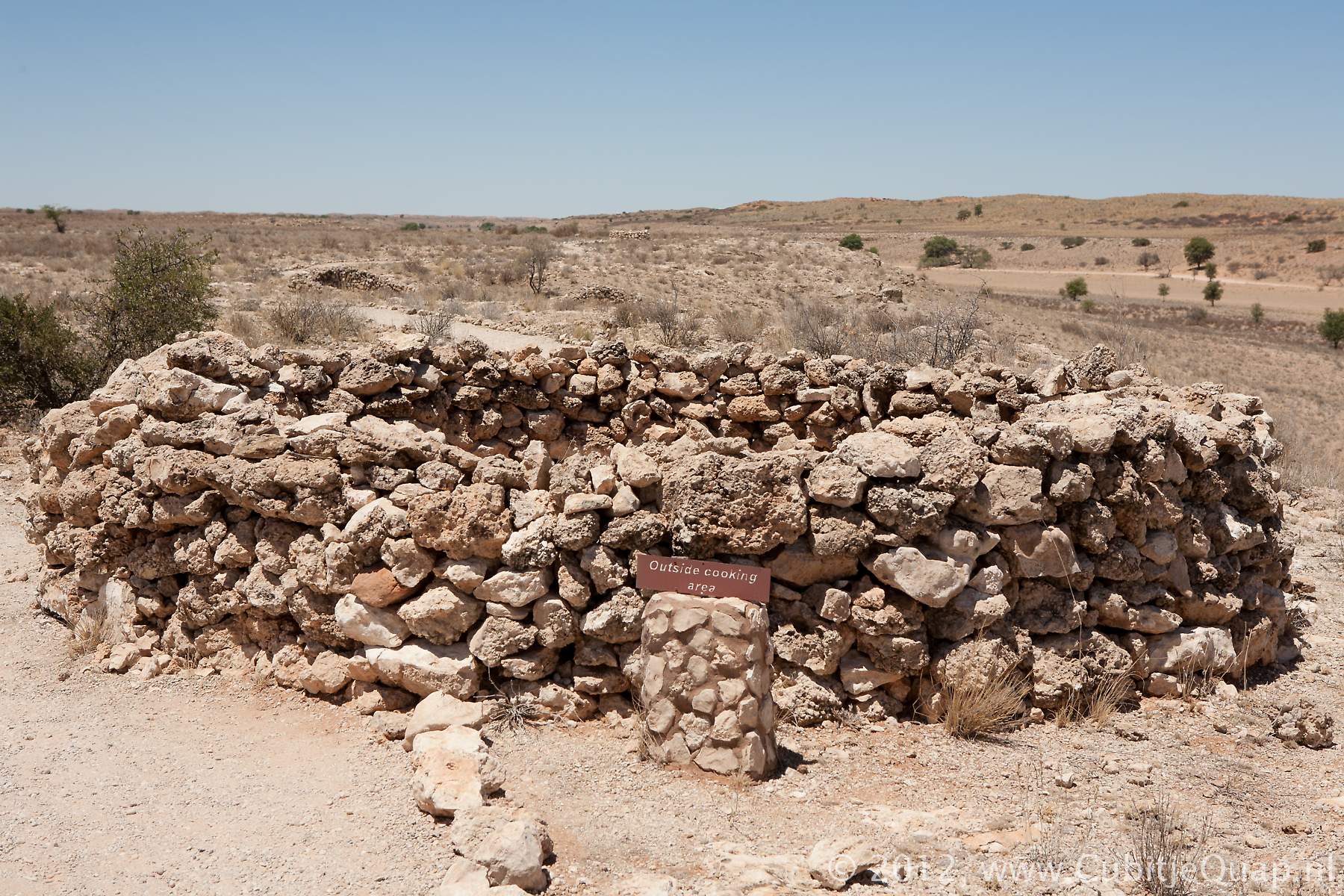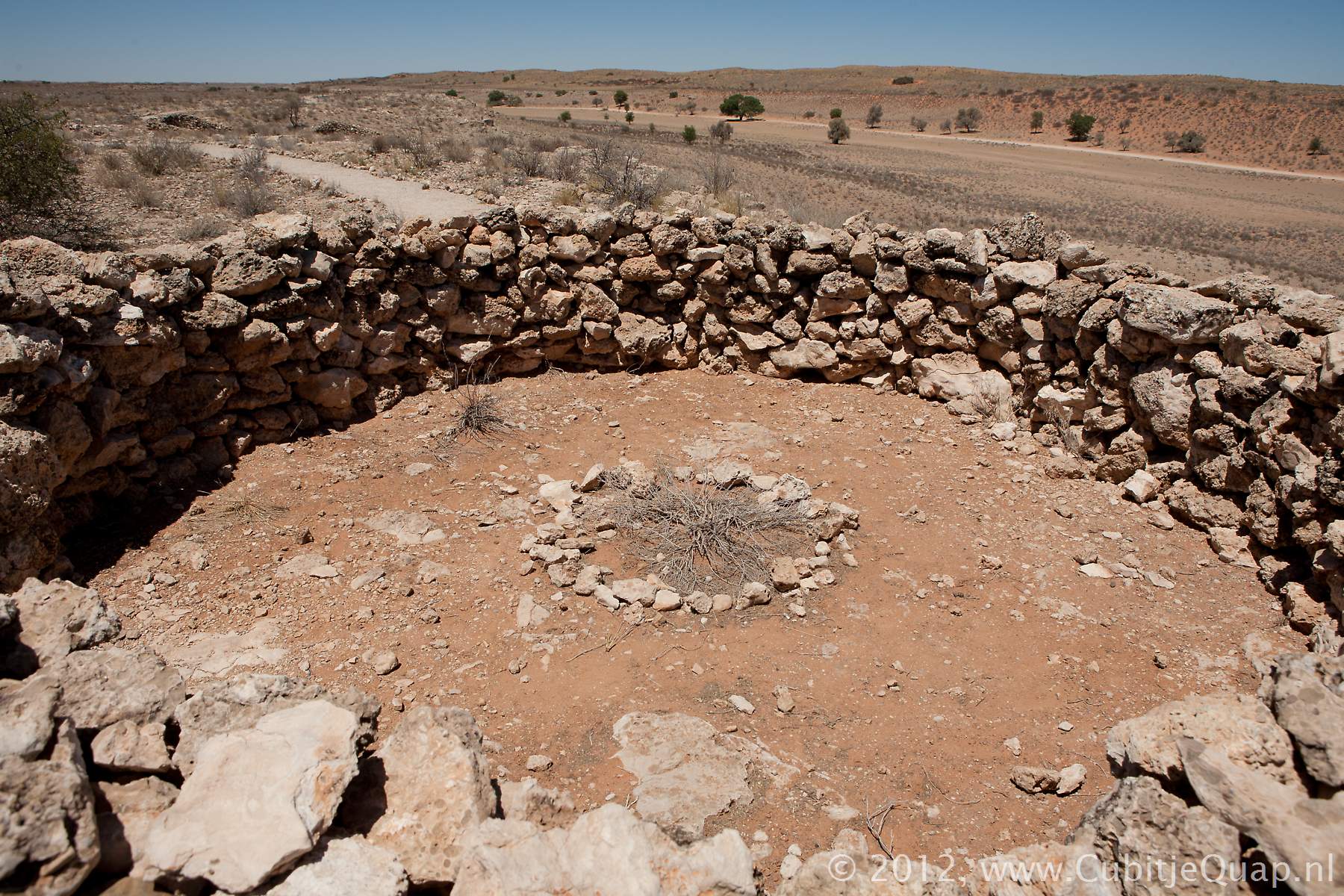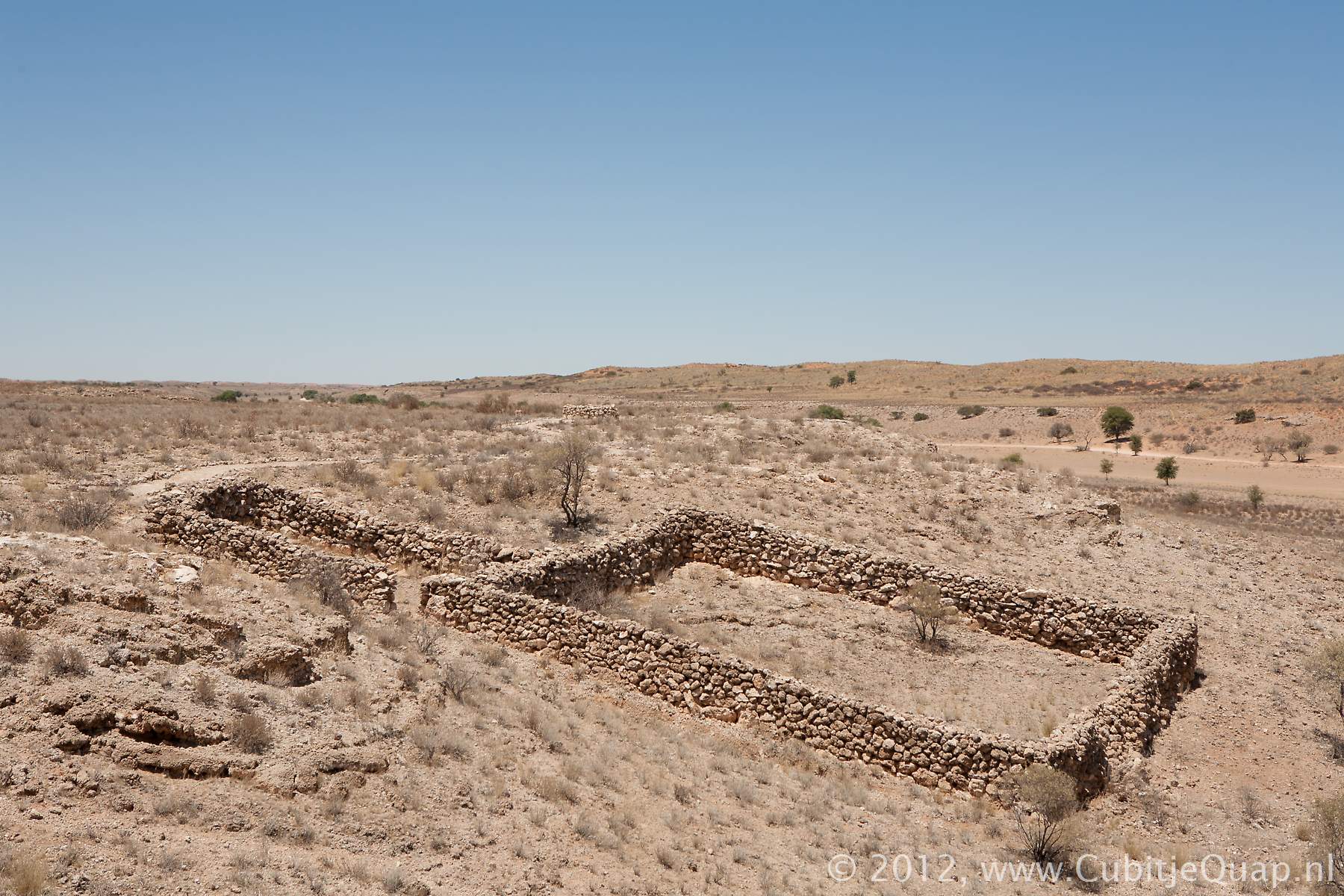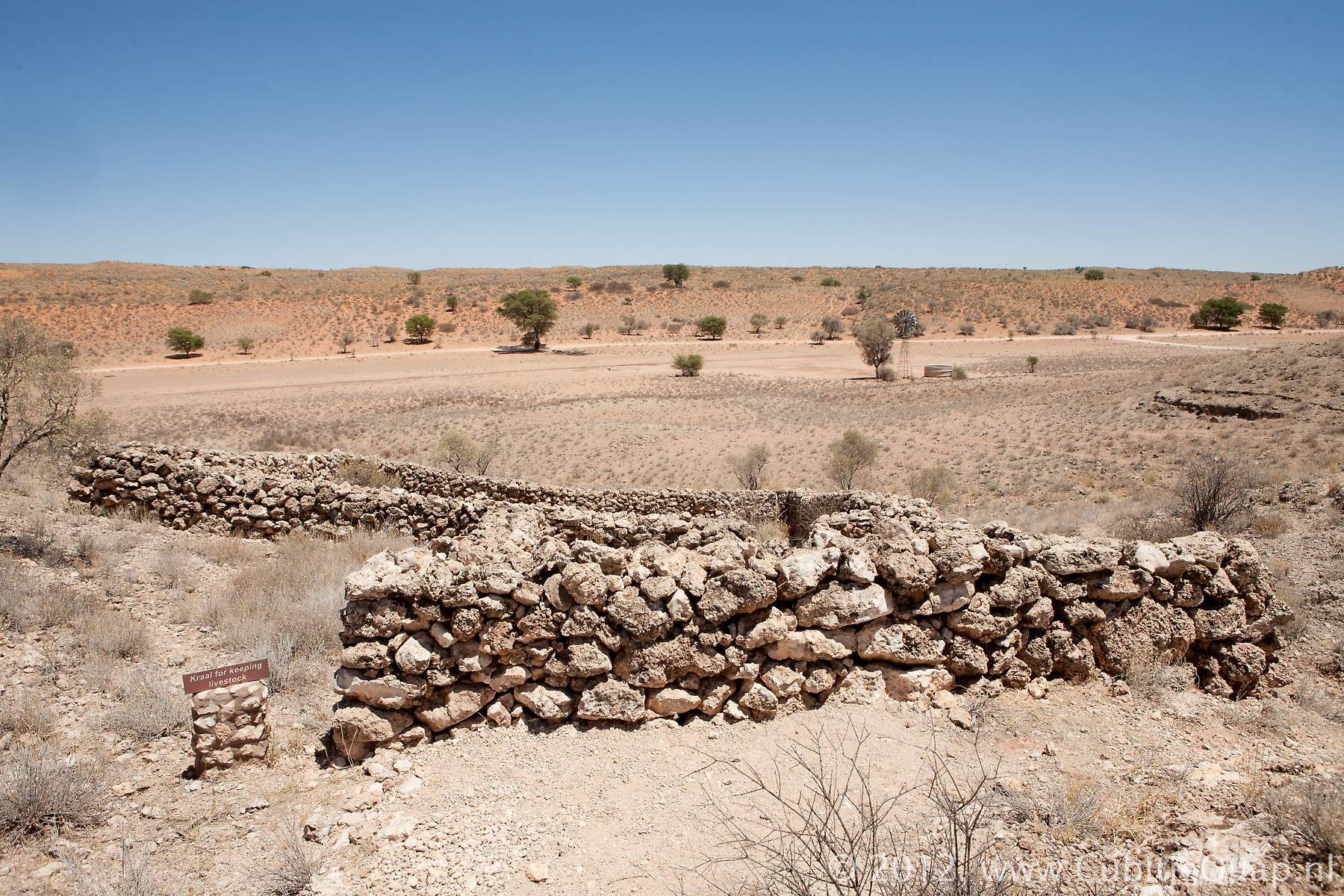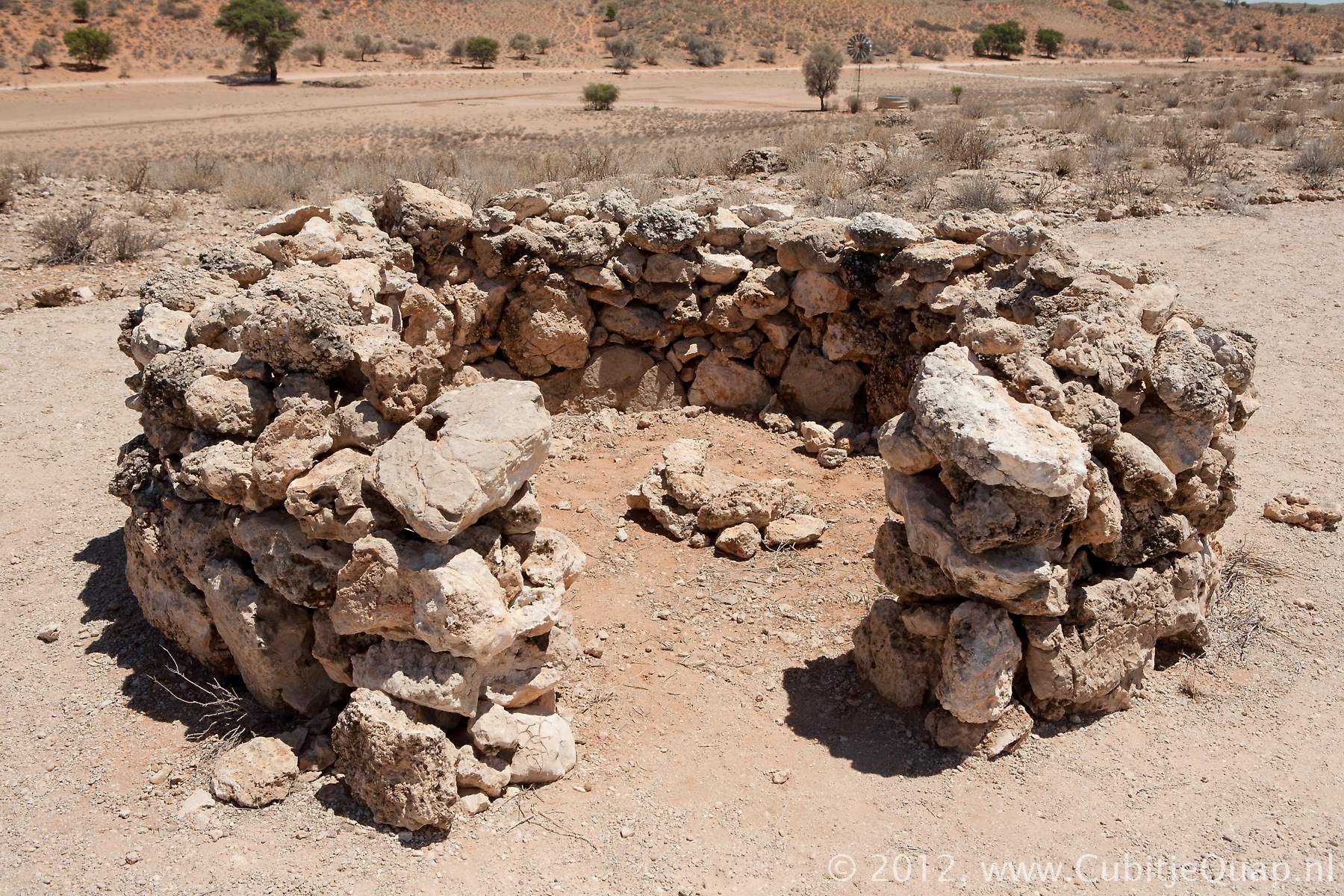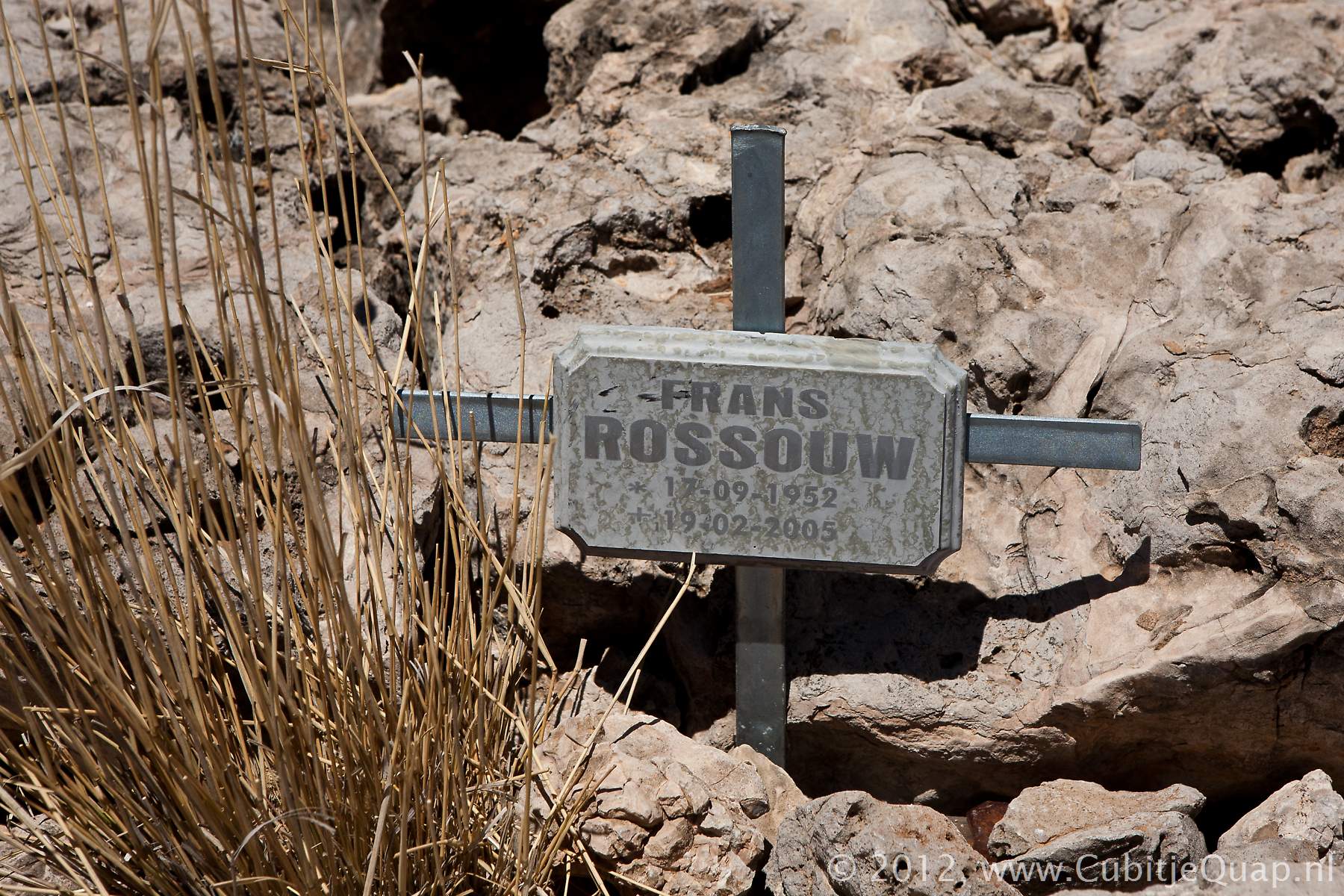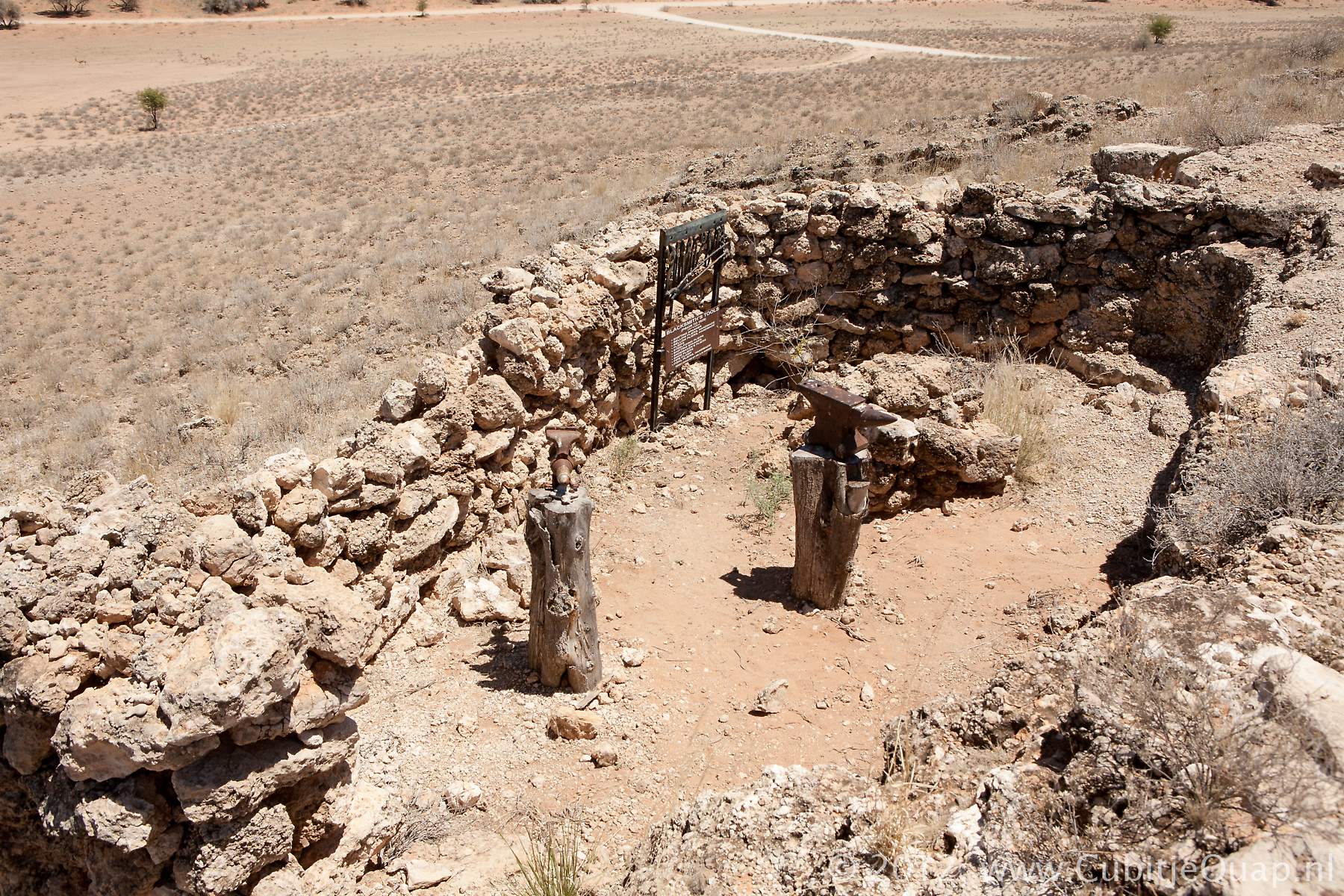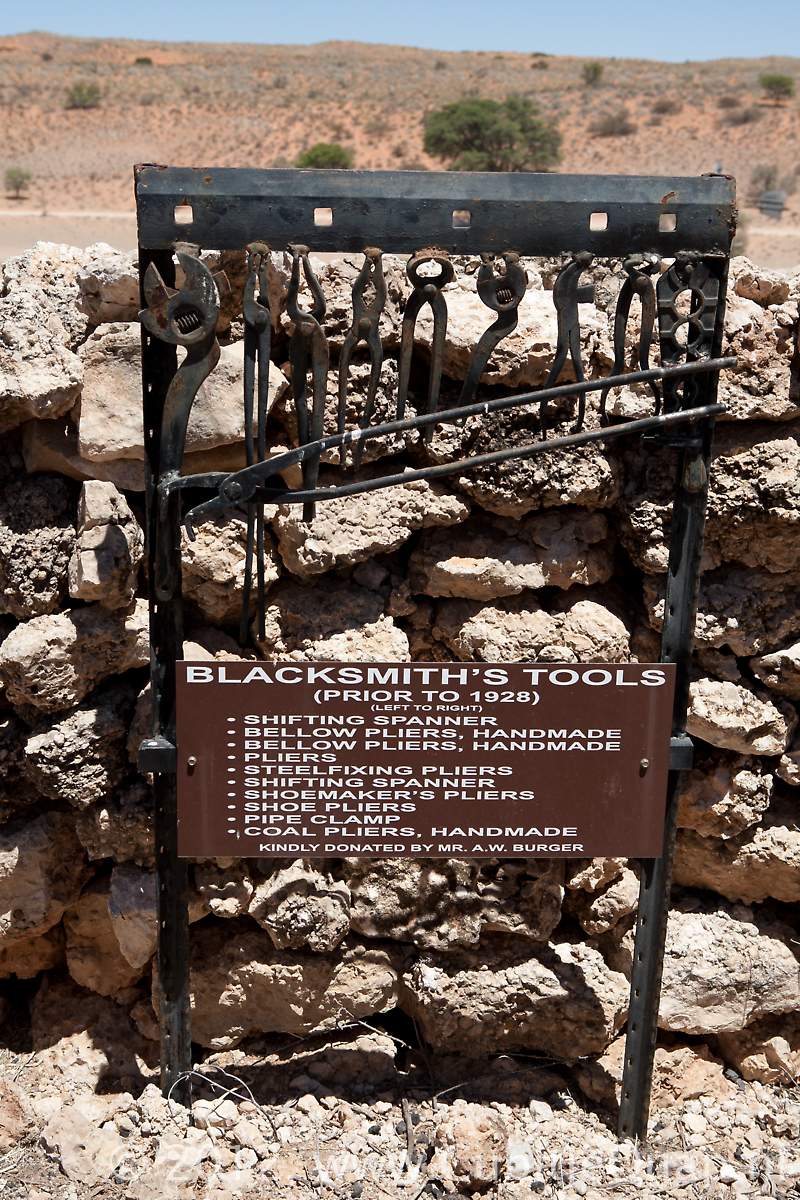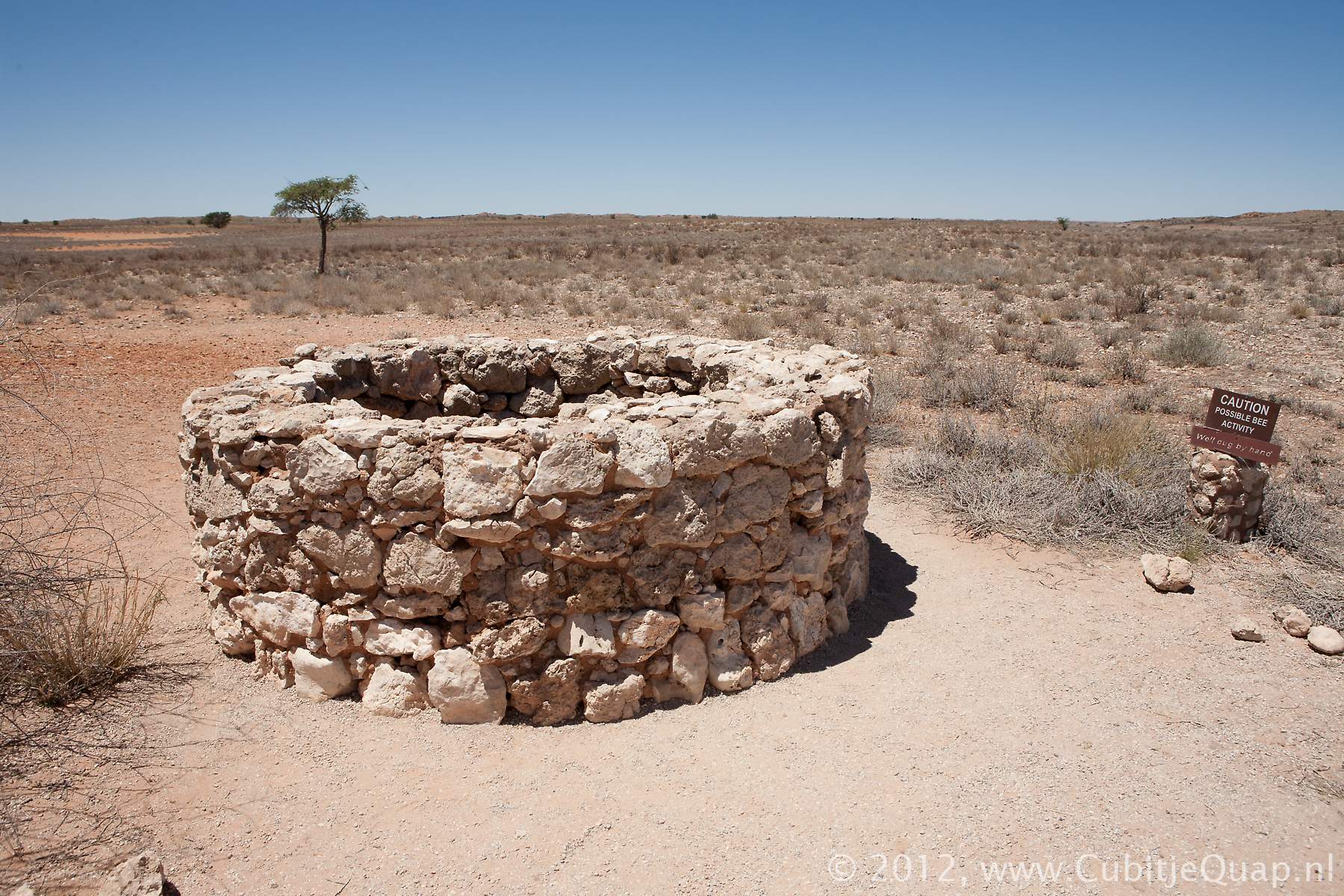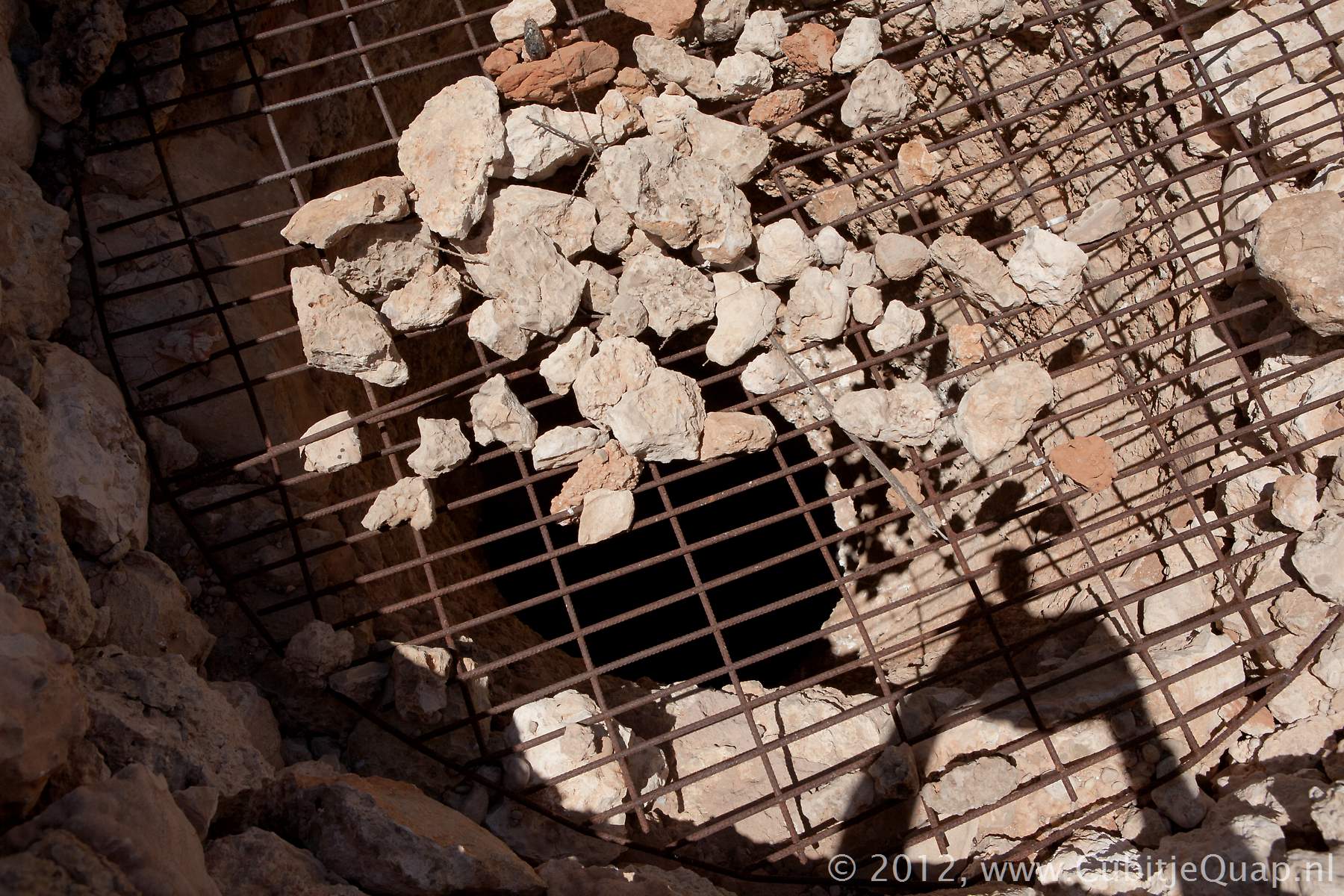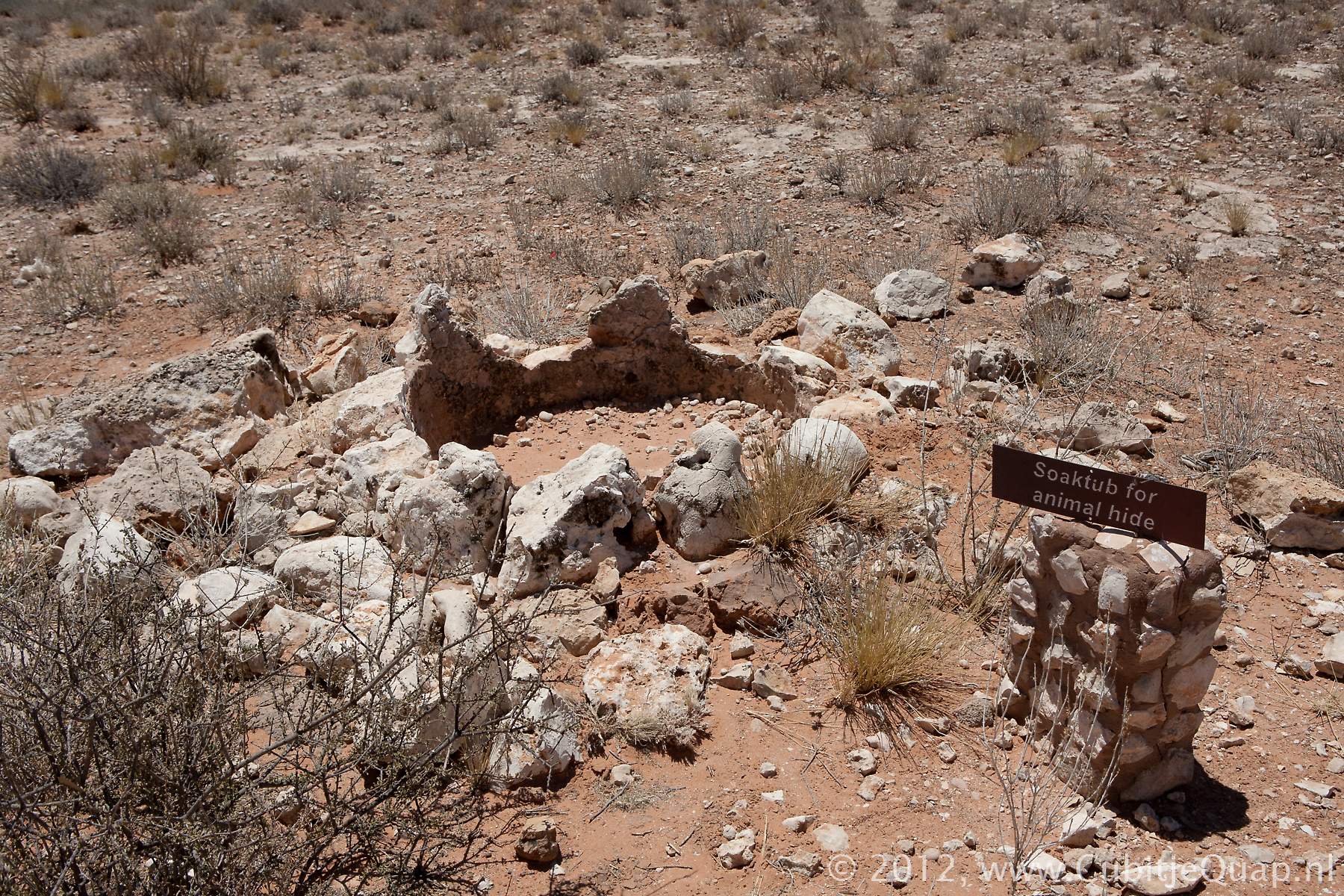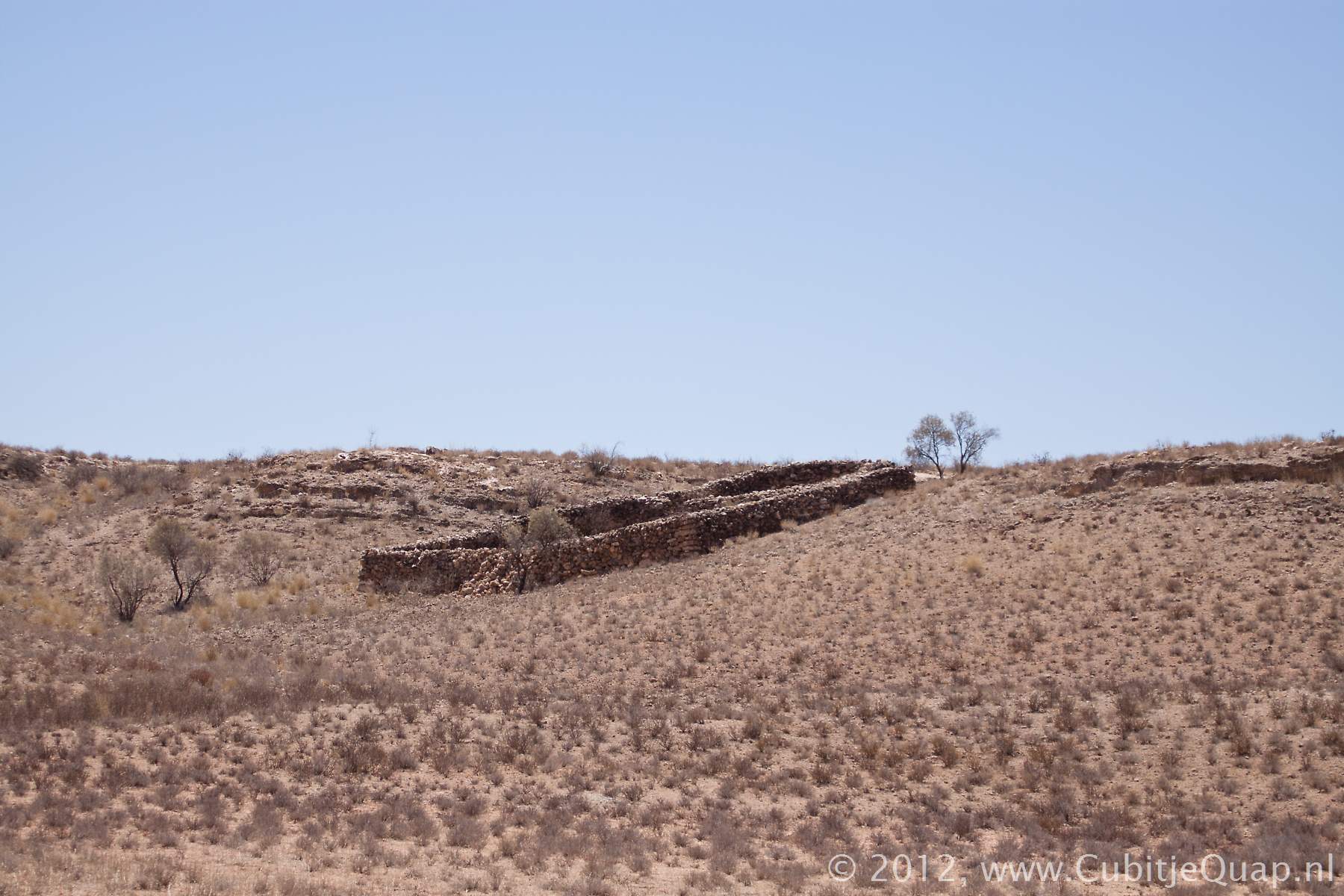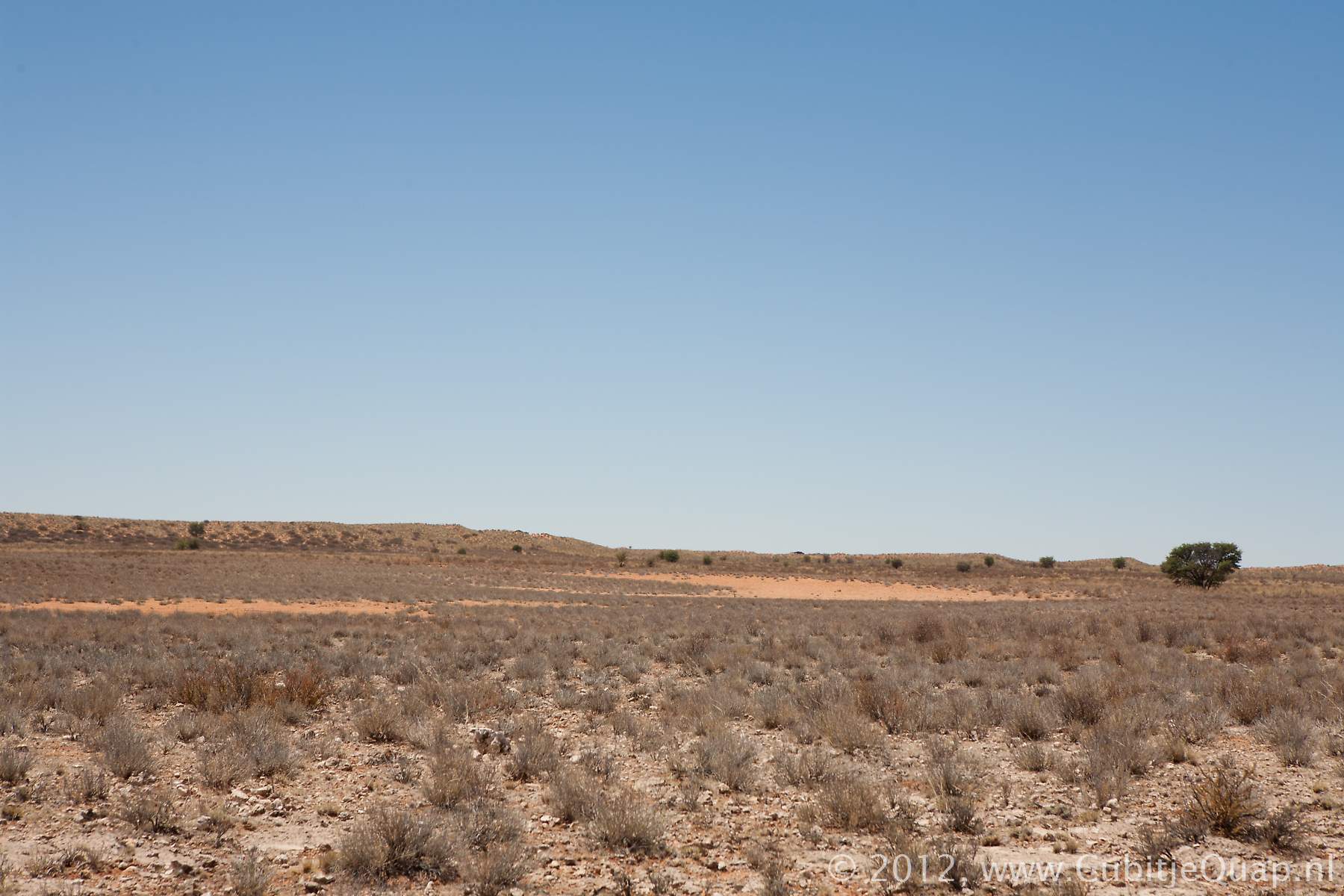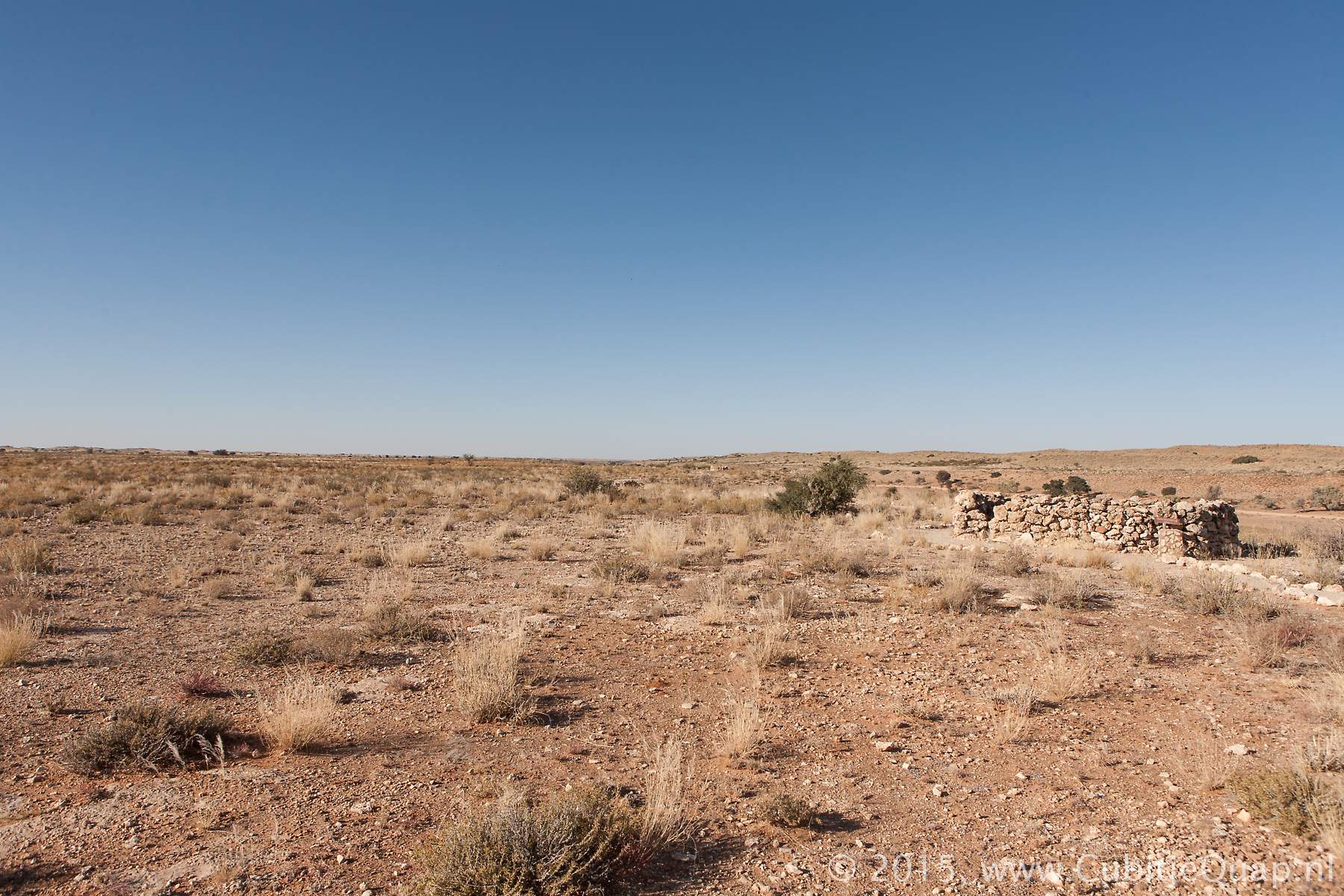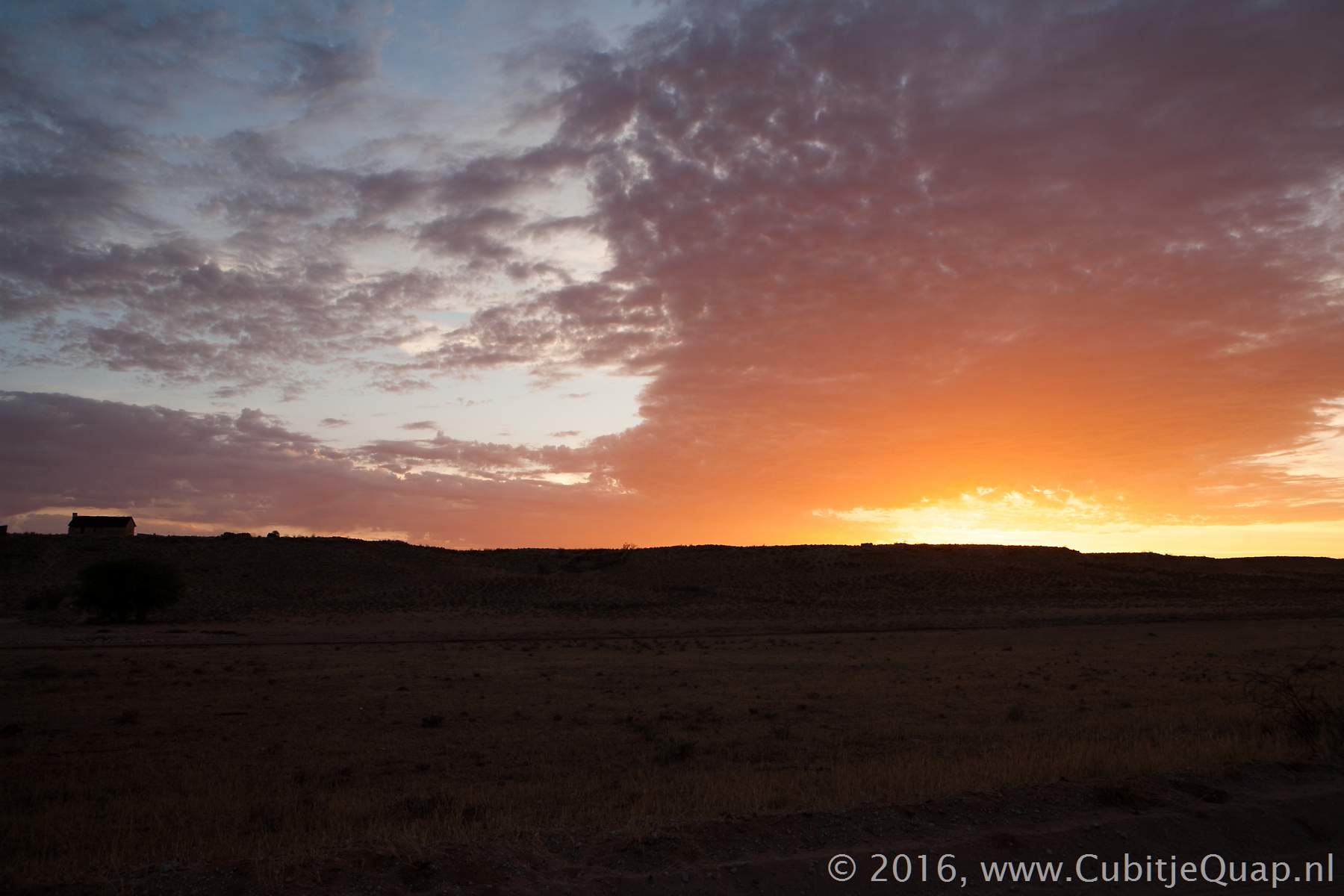Auchterlonie Museum is an old farm, restored in 2004 through the poverty relief project that was funded by the Department of Environmental Affairs and Tourism.
It shows the old fieldstone farmhouse and the shelters and areas of daily life around the house. These include the blacksmith area, with tools on display, the cattle corral, the outside cooking area, a soak tub for animal hides and a hand-dug well.
Germany occupied Namibia (then known as South West Africa) in 1884. With the outbreak of World War I in 1914. the Government of the Union of Aouth Africa drilled a series of boreholes along the Auob river to provide their troops with fresh water - in case of a South African invasion of Namibia along these route.
Guards, recruited mainly from the local community, were hired to protect and maintain the bore holes and these guards were permitted to "settle" next to the boreholes with their families and livestock. They used tradictional wattle and daub methods to construct their houses and stock shelters or alternatively used the local calcite stone.
The South African invasion of South West Africa took place via another route, and the borehole guards stayed on largely forgotten by the authorities.
Between 1913 and 1917 the present park was surveyed and divided into farms by a Scottish Surveyor, Roger "Malkop" Duke Jackson, which explains the many Gaelic names of waterholes in het park.
After World War I these farms were made available to white people and later also to coloured people. Only a few families were prepared to settle on these farms and in 1931 the Minister of Lands, Mr. Piet Grobler proclaimed the area a national park.
Land was purchased south of the park to re-settle these farmers and the borehole guards were given land along the Kuruman River. Their houses and other structures in the Auob were abandoned.

